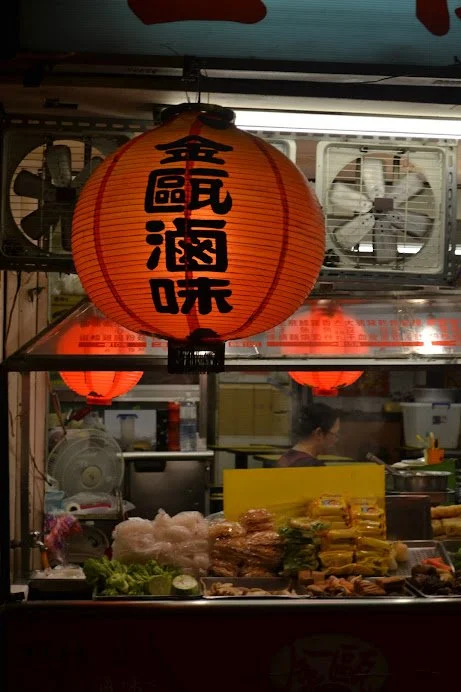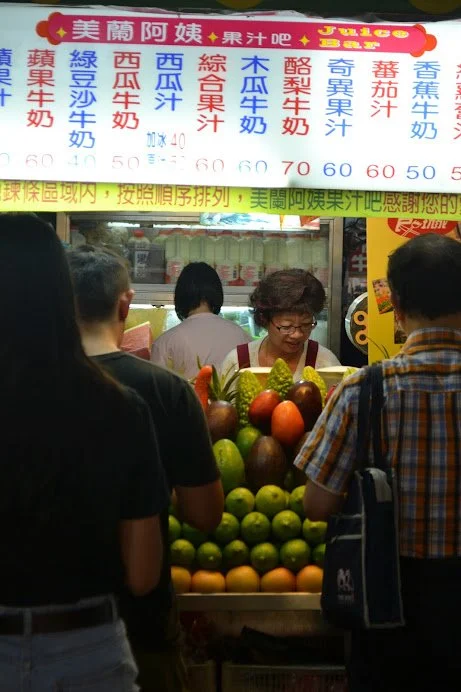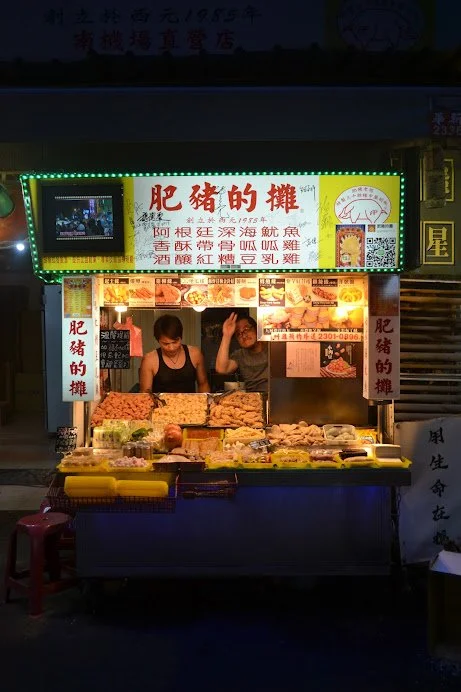Bing and Bao I - A Culinary Diary in Taipei
East Asia columnist Liam Elliott Brady explores how Taiwan has been shaped by its varied colonial past and unique geopolitical situation through food. Through continuous interaction with foreign powers, Taipei has developed a diverse culinary culture; this column aims to make sense of it, discussing the significance of one aspect of the Taipei food scene in each instalment.
Foremost among the achievements of Tang Dynasty China (618-907) was the creation of a thriving cosmopolitan civilisation. Driven by frequent interaction with alien cultures through the Silk Road trading route, the imperial capital Chang’an quickly established itself as the world’s first multi-ethnic metropolis: boasting a population of close to two million Han natives and 25,000 foreigners, Chang’an’s position as the global centre for cultural exchange was undisputed in the Medieval Era. Inevitably, this unprecedented level of diversity would lay the groundwork for a uniquely rich culture to flourish. Indeed, some of the most celebrated tenets of Chinese culture were born out of this period: the poetry of Du Fu and Li Bai, the integration of Buddhism into the Chinese philosophical tradition, and the development of the shanshui landscape painting, to name but a few. As for culinary developments, it could easily be argued that the emergence of the ‘night market’ constitutes one of the most fundamental moments in the history of East Asian fast-food culture.
Rows upon rows of unregulated nocturnal food stalls would sell stripped-back interpretations of banquet meals, xiaochi (“small eats”), to regular folk who stood in queues shoulder-to-shoulder with members of the emerging intellectual class. Whereas the mainland China appears to have cooled off the idea of the night market following the imposition of more stringent regulations, this could not be further from the truth in Taipei, where markets such as Shida, Shilin and Raohe are central parts of the city’s vibrant nightlife. After two weeks of tepid, flavourless packaged food in a remote quarantine facility, I was desperate to see what the night markets of Taipei had to offer.
Over the course of night markets’ relatively brief presence on the island, Taiwanese society has been shaped, dismantled, rebuilt and redefined by the volatile forces of geopolitics. As a result, through sometimes peaceful but often forcible means, Taiwan has been subjected to cultural influence from all corners of the Pacific Ocean: Taiwan has welcomed a steady flow of Han Chinese settlers from the late Qing Dynasty onwards; operated as a vassal state to Japan following the Sino-Japanese War (1895); and found a valuable economic and military ally in the US following the establishment of the PRC in 1949. Night markets have closely mirrored these seismic cultural shifts. On my first visit to the iconic Shilin Night Market, it is in fact the distinctly American undercurrents that strike me. Stalls selling yansuji (“salty, crunchy chicken”), a more adventurous interpretation of Southern American fried chicken, attract the most attention from those passing by. The smell is extraordinary, and I am informed by Luke, my token meat-eating friend, that the flavour does not disappoint. Unlike their comparatively drab American cousins, yansuji fillets are hefty slabs of meat seasoned with a rich blend of spices consisting of five spice and Sichuan peppercorns among others. “The crispy Thai basil,” Luke posits, “makes the chicken addictive.” His verdict: “even better” than chicken shops in London. High praise, supposedly.
An inescapable fixture of any night market is, however, choudoufu (“stinky tofu”), a delicacy whose deathly odour appears to haunt any passer-by who dares turn their nose up at the thought of trying some.Recent chemical analysis found up to 39 “volatile organic compounds'' in servings of choudoufu, and considering its method of preparation, it is not difficult to see how: tofu is fermented in brine consisting of milk, vegetables, meats, shrimp, herbs and greens, for any period between two and twenty-eight days. Taiwanese night markets are famed for the crispy variety of choudoufu, which is fermented over a shorter period and cooked to order in hot oil. In theory, this is conducive to a more subtle flavour. Nevertheless, I soon discover that deep-frying the tofu does very little to kill or even mask the smell, which is far from ideal in a relatively small flat with limited air conditioning.
As the owner of an admittedly conservative pallet and an ardent vegetarian, I am naturally unenthused by the prospect of yansuji or choudoufu. Instead, I find myself drawn to congzhuabing (“spring onion grab pancakes”) and, although I am told that it is frowned upon by locals as tourist-friendly, Tiktok-able junk food, it quickly becomes a staple of my high-cholesterol, low-nutritional value Taipei diet. A small local market near Gongguan, I discover, has a Michelin-recognised congzhuabing vendor. I come for the aromatic, crispy congzhuabing, but I stay for the chat: the hawker turns out to be an enlightened soul, accustomed to giving advice to confused foreigners. I have now committed to frequenting her stall every evening over my stay here to quench both my hunger for oily carbs and my thirst for wisdom.
Perhaps unsurprisingly, the reputation of these vendors has been tainted by their historically sour relationship with the police; as beacons of rustic, informal dining naturally resistant to stringent government regulations, night markets have since their inception fallen victim to unrelenting, and often groundless, attacks from law enforcement and politicians alike. Some of the earliest night markets in Song Dynasty China became associated with the debauchery of urban nightlife in the eyes of the law. As such, stringent curfews were imposed, leading to the marginalisation and continued suppression of street vendors in the centuries that followed, including throughout Taiwan’s period of Japanese occupation.The scapegoating of night markets has taken a more covert form over recent decades: while explicit examples of legal discrimination are far less frequent, they continue to be dragged through the mud by the dregs of local media. In a characteristically obtuse series of attacks this October, Taipei-based papers have pointed to a video of one vendor re-using a vat of a questionable dark liquid as evidence for a wider hygiene issue across the city’s night markets. Yet these accusations appear to be rooted in prejudice rather than fact: a 2012 report found that while basic hygiene customs could have been observed more rigorously, the likelihood of contracting diseases through night market food was fairly low in comparison to eating at conventional restaurants.
Unfortunately, police hostility directed at night market vendors is apparent now as ever before, albeit to a slightly lesser extent. Uniformed officers patrolling nearby street corners have a deeply unsettling energy about them, and serve as unwelcome reminders of the police’s overbearing presence in hawkers’ business. In a particularly bizarre interaction with a veteran congzhuabing hawker in the heavily gentrified Ximen District, my order is interrupted by the sudden arrival of a Ford Transit plastered with sickly anime characters. The hawkers remain calm. In unison, they wheel their stalls from the high street, seeking refuge in a dingy alleyway nearby. The occupants of this clown car, we are told, are a particularly zealous fleet of undercover cops who have been disturbing the peace over the past few weeks. Unperturbed by this brush with the law, the vendor continues to work away at my pancake. And it’s one of the flakiest, spiciest and greasiest I’ve had yet: the secret ingredient, I reckon, is crime.
Night markets, like most other small hospitality businesses, have seen the covid pandemic take its toll on profits. Even as Taiwan emerges from lockdown, the markets do not resemble the hustling cultural hotbeds I was promised. Beyond this, the Taiwanese government’s earnest approach to tackling the pandemic has had a profoundly negative effect on businesses like night markets which depend so heavily on maintaining high footfall. This has led to local media publishing overblown articles suggesting that covid poses an existential threat to night markets in Taiwan. The street vendors, however, appear unfazed by this chatter - and with good reason: Taiwan is home to more night markets (70) than ever before. Indeed, Taipei’s night markets do not strike me as a custom in decline. The stalls and the neighbouring bars have proven to be the most vibrant, energetic and authentic avenues for interacting with Taiwanese people so far. Night markets offer us a window to understanding how Taiwanese society was shaped. They have weathered historic legal discrimination, relentless media scrutiny, and a global pandemic. Most importantly, night markets have etched their legacy into Taiwan’s collective identity. And it is for this reason that they’re not going anywhere.
All images belong to the CLC.



